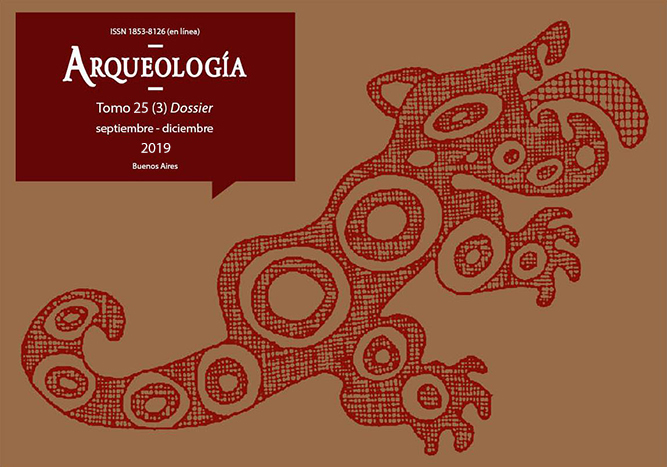Preliminary anthracological analysis of Cerro Farall archaeological site (Diamante, Entre Ríos)
Keywords:
Mound, Archaeological charcoal, Roupala, Ethnobotany, Argentinean Northeast, Late Holocene
Abstract
In this paper, we present the first anthracological analysis of the Cerro Farall site. This archaeological site (830 ± 40 years BP) is an earth mound structure located at the intersection of a paleochannel with La Palometa Creek, in the south of the Pre-Delta National Park, Entre Ríos province. The carbonized woods were found concentrated in grids 1 and 4, at a depth of 10-15 cm. We identified 39 fragments of charcoals that were assigned to: Ocotea sp., Nectandra sp. (Lauraceae), Roupala sp. (Proteaceae), Celtis sp. (Cannabaceae), Jodina rhombifolia (Santalaceae), Anadenanthera sp., Enterolobium sp., Chloroleucon sp. (Fabaceae), Aspidosperma sp. (Apocynaceae) and Cestrum sp. (Solanaceae). Given that the charcoal fragments come from a combustion structure, we assume the use of the identified taxa as fuel. However, to get a better understanding of the possible practices related to the use of plants and the management of the forests by the pre-Hispanic society that inhabited the site, we discuss the current use of modern specimens, and their availability in the study area, considering the ethnobotanical record.Downloads
Download data is not yet available.
Published
2019-10-01
How to Cite
Ramos, R. S., Silva, C. B., & Brea, M. (2019). Preliminary anthracological analysis of Cerro Farall archaeological site (Diamante, Entre Ríos). Arqueología, 25(3), 59-85. https://doi.org/10.34096/arqueologia.t25.n3.7324
Section
Articles
Copyright (c) 2019 Arqueología

This work is licensed under a Creative Commons Attribution-NonCommercial-ShareAlike 4.0 International License.
Authors who publish in this journal agree to the following conditions:
- Authors retain copyright and yield to the journal right of first publication with the work registered with attribution license Creative Commons, which allows third parties to use the published always mentioning the authorship of the work and first publication in this magazine.
- Authors can make other independent and additional contractual arrangements for the non-exclusive distribution of the version of the article published in this issue (p. Eg., Inclusion in an institutional repository or publish it in a book), provided that clearly indicate that the work was published for the first time in this magazine.
- It allows and encourages the author / s to publish their work online (eg institutional or personal pages) before and during the process of revision and publication, as it can lead to productive exchanges and greater and more rapid dissemination of work published (See The Effect of Open Access).





(1)13.png)






1.jpg)
1.jpg)


13.png)
1.png)


(1)1.png)









